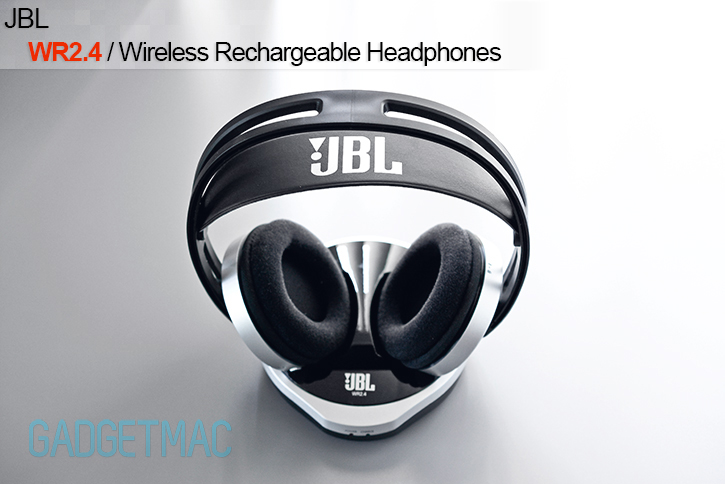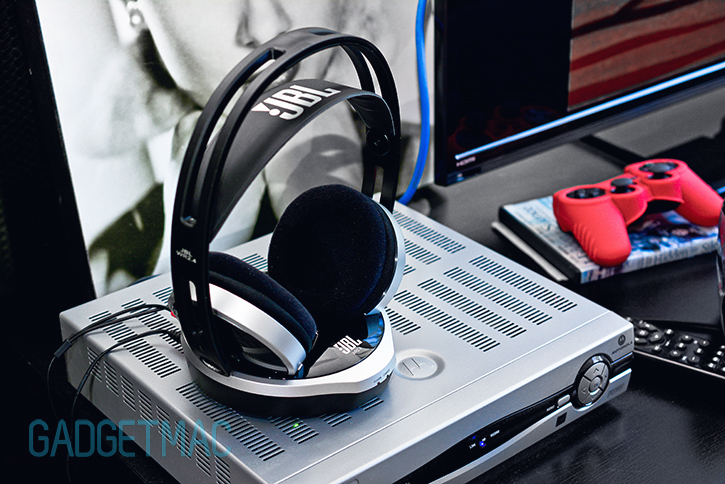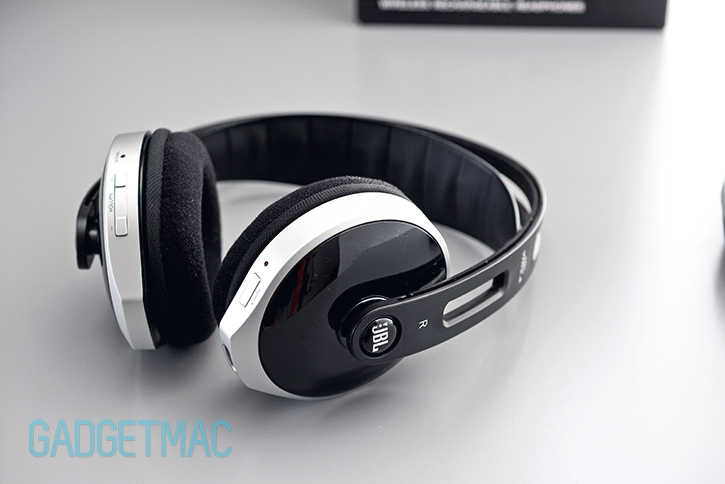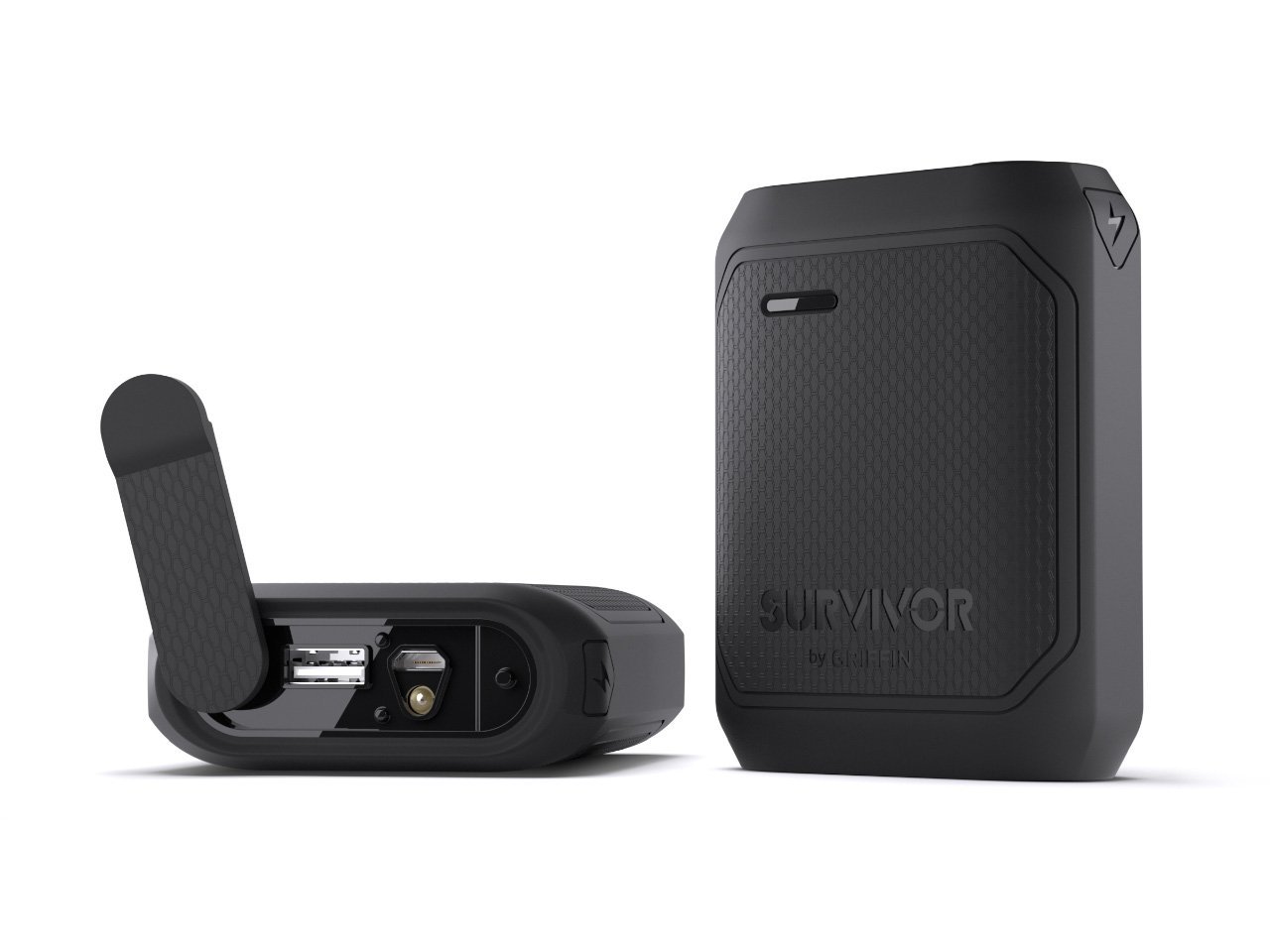JBL WR2.4 Wireless Headphones Review
/JBL's first new pair of wireless headphones aren't exactly what you would expect to be a Beats Studio rival, they are however meant to be used as wireless home entertainment headphones. With a built-in rechargeable battery and an over-ear design, the WR2.4 wireless headphones can be connected to any audio source giving you the wireless freedom to roam when gaming, watching a movie or purely listening to music using a robust 2.4GHz wireless connection while keeping it quiet for those around you. And yes you heard correctly, no fancy Bluetooth 4.0 used in the making of the WR2.4. But there's a reason to this madness that anyone looking to get such particular wireless headphones will come to appreciate as an advantage over the common Bluetooth-featuring headphones - and that's compatibility and clean, lag-free audio transmission which is why most gaming headsets feature such wireless connectivity. As versatile as these may be, they do have a few shortcomings we'll be telling you about in our full review down below.
Branded as in-home entertainment headphones, JBL's WR2.4 are exactly that and nothing else. The matching base serves a double purpose in that it's a charging dock and a wireless transmitter giving the headphones an impressive wireless range of up to 100ft (30 meters) that's sparkly clean and free of static and noise. The base does require power and needs to be plugged in using the supplied wall power adapter. To charge the headphones you simply place them in the charging cradle and they'll start to charge immediately. In fact the whole idea is very similar if not identical to the common household cordless phone you may be using in your home.
What I really like about the use of a 2.4GHz wireless connection instead of Bluetooth is that you have nothing to set up. Literally plug the base station into a power outlet, turn on the headphones and you're instantly connected and ready to go. There's absolutely no lag between the time you hear the sound with the headphones to the moment you see it on the screen - which is what you would expect when using these to watch a movie or play some video games. Covered in glossy black and metallic silver plastics, JBL's WR2.4 have no interest in impressing anyone with their styling. They're supposed to be kept indoors so fancy design isn't all that relevant. Seeing that you'll most likely use these as couch/bean bag lounging headphones, we're not going to be overly critical about their forgettable, generic design no one really care for.
It's worth noting that without their base station, the WR2.4 are pretty much useless lightweight paperweights. Unlike other wireless headphones, Bluetooth and non-Bluetooth alike, the WR2.4 can only be used in wireless mode and cannot be plugged in to charge and to play audio while you wear them. While we haven't experienced any connection issues or interference except for clean audio awesomeness equivalent to a wired connection, it doesn't mean that you wouldn't. The wireless signal can be interfered with if the WR2.4's base transmitter is placed close to other devices that have an affect on the signal which you'll notice when hearing artifacts in the sound.
Around the back of the base is where you'll find analog RCA audio inputs, a power adapter input as well as a sensitivity gain switch that offers a subtle audio adjustment for sensitive audio sources if need be. You'll get a 3.5mm to RCA (red/white plugs) stereo audio cable to connect the WR2.4's wireless base with your audio source. You can of course use your own compatible audio cables if you wish. That just about does it for setting the unit up, a matter of plugging in the included audio cables and choosing which audio source you would like to pair the WR2.4 headphones with like your TV, cable box, computer, gaming console and so on. The downside is that the WR2.4 can only be connected to one audio source and have very basic connections that fortunately are the most common of all.
You can connect your smartphone or tablet to the WR2.4's wireless base, but it isn't nearly as convenient as using a Bluetooth connection with your wireless headphones as you do need to physically plug in a wire into your device which sort of defeats the purpose of using wireless headphones with a portable device. The issue is obviously not a big deal when connecting a stationary device such as a TV or gaming console.
Sitting in front of the TV for more than an hour will wear you down when wearing the WR2.4 as they start to become uncomfortable during extensive periods of time. No soft padding other that a thin piece of mesh lines the interior of the plastic driver grille which is what you'll start to notice pressing up against your ears after a while. However, they're very light and have large, over-ear sized fabric-covered foam ear pads that have no trouble fully encasing your ears. Then again, the pads can be graded as economy class quality and aren't made of memory foam.
With a self-adjusting headband reminiscent of Harman Kardon's NC, BT and CL headphones, the WR2.4 fit and adjust nicely over your head as you pull them down and over you ears. That said, the headband is useless at providing any sort of padding. It's just a thin, cheap piece of vinyl with a piece of stretchable fabric ribbon. But luckily it really doesn't impede on the comfort.
What can I say, the WR2.4 have one of the worst plasticky constructions I've ever tested in a pair of $100 headphones. The materials are cheap, the build quality is cheap and even the time that went into egineering these headphones was most likely backed on a cheap budget. Durability is highly questionable, but in the time of using these I can't say that I feared they would fall apart. So if you take good care of your stuff, you should have much of a problem with the rigidity of the WR2.4. I would note that if you spend full retail ($100) on these, you'll be greatly disappointed with how they feel and sit on your ears.
The ear cup hinge is a laughable pivoting plastic joint waiting to be snapped in half. Although it does its job well there's no question about it, I've never seen such a fragile looking hinge that is so badly implemented.
The WR2.4 feature on-board volume controls and an on/off power button, but lack a mute button. A green LED stays lit letting you know that the headphones are wirelessly connected to the base while a red LED notifies you that the headphones are on. Blinking lights in this case always mean that something has gone wrong - low battery or a connection problem.
Again the on-board volume controls and buttons work flawlessly, but they still have this extremely cheap feel to them that you won't find on headphones costing as much at these do. They strongly remind me of the free wireless IR headphones some car companies throw in for free when you purchase a car with a DVD car package, only that these are much better still.
The WR2.4 have two built-in, user replaceable rechargeable AAA batteries underneath the replaceable ear pads that provides 8 hours of wireless streaming. Battery life isn't all that impressive when looking at a number of wireless headphones made by Sony, each fetch 20 hours or more per charge. But are you really going to sit through 8 hours without giving your headphones some time to rest? So really letting them charge for a while after roughly 8 hours of use is not too bad.
In order to conserve battery power, the WR2.4 power off automatically when audio isn't being played. But it comes at a cost because the WR2.4 power off after 4 minutes of being inactive, and that can be annoying when you're using them with a computer to listen to music or to watch videos with pauses in between.
Underneath the cheap and plasticky build quality, the WR2.4 sound surprisingly good. They've got JBL's typical light, treble-filled sound signature that for the most part sounds neutral - great in the WR2.4's case since they have to adapt to multiple types of audio sources and uses. Overall audio sounds really clean, crystal clear and although not amazing by any stretch, acceptably so given the price and wireless range.
What they really lack is good sound isolation, being semi-closed over-ear headphones, the WR2.4 are purposely made to isolate little background noise so that you can still somewhat hear what goes on around you. There's definitely some good performing lows in there that need some better isolation to be pronounced. The WR2.4 lack thumpy bass, however, they still don't sound entirely flat and do have acceptable sounding bass that suits every listening scenario you can think of. Another positive attribute is that they don't distort even at the highest volume level. During gaming, the WR2.4 handle loud explosions and gun fire extremely well almost as well as gaming-spec headsets.
With that being said, we don't think you should exclusively use or purchase them as gaming headphones because while they do sound good, they're not nearly as good as dedicated gaming headsets. That, plus the fact that the WR2.4 don't have a microphone support so you can't use them as a headset. Otherwise, the WR2.4 are great wireless headphones when it comes to watching TV and movies with occasional gaming to boot. Also worth pointing out is that when using the WR2.4 with various devices, I noticed that they're underpowered when hooked up to a TV or a small portable device like an iPhone or iPod. What that actually means is that they aren't as loud as most headphones. It's fine if you're alone in the house and there's little background noise, but in a noisy environment even the highest volume level will be disappointing.
While we don't think the WR2.4 can substitute a proper gaming headset or an equally priced wired headphones, they'll make a great alternative if you're looking for a pair of inexpensive wireless headphones that can be used across multiple devices while keeping all the noise to yourself. But we do only recommend using them for watching TV and movies or even light occasional gaming if you don't mind doing so alone and without voice chat, albeit you'll be the only one enjoying them since a second pair cannot be connected to the same wireless base nor does JBL offer individual pairs to be used with a single transmitter base.
And again, if you want a wireless pair of headphones to use mainly as your computer or gaming console headphones, don't get the WR2.4. They are slightly underpowered, feel extraordinarily cheap all around, aren't very comfortable, don't isolate well and don't have the right set of features we look for in dedicated wireless gaming or computer headphones. Yet somehow the WR2.4 manage to sound and perform really well. There are also other limitation that ground you indoors when using the WR2.4, which is that you can't use them on the go like you can with wired or Bluetooth headphones. Another drawback is that when you're out of juice, you'll need to wait a few hours for them to charge back up in their charging base.
All things considered, we don't think they're worth the asking price as they offer very little in terms of fit and finish. On the upside, you can save a considerable amount of money purchasing a pair for as much as half the retail price on sites like Amazon and eBay.









































